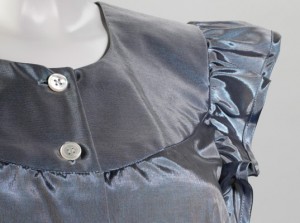A Mar. 19, 2013 news item on Nanowerk details a technology from UK company, Odegon Technologies, which could eliminate the use of deodorants and antiperspirants,
Underarm clothing tags which harness and store the molecules responsible for the smell of perspiration will be made available on the UK high street from March [2013].
The breakthrough invention from technical fabric innovators, Odegon Technologies, eliminates the unwanted smell resulting from human sweat via a small and discrete 7cm x 4cm fabric tag housing a three-dimensional mesh of highly absorbent material. The DeoTags will be discreetly sewn into the underarm of three suits and one blazer available nationwide and online by UK retailer, Marks & Spencer (M&S). As part of the retailer’s summer range, the tailoring offers consumers a unique solution to unwanted smells in the summer weather, and as such, could reduce dry cleaning costs and prolong the life of the garment.
Jasmin Malik Chua in a June 16, 2010 article for ecouterre about the product (called Odour Tags at the time) gives some technical information (Note: A link has been removed),
Dubbed “Odour Tags,” the stink-eliminating patches are chemical-free, inert, odorless (naturally), and non-allergenic, according to the Shropshire, England-based firm. The tag can be integrated into the underarm area of the garment by clothing manufacturers or sold as an iron-on patch for application at home. In both cases, notes Odegon, the tag will remain permanently in place for the life of the clothing, no matter how many times it’s washed or dried.
… Made from nanoporous carbon, the surface area of the active inner material is composed of myriad peaks and troughs, which attract and trap odor molecules by Van der Waals forces until the garment is cleaned and the molecules are flushed out.Activated carbon itself has a storied history; it was patented in 1942 by the British Ministry of Defence for use in gas masks and CBRN (chemical, biological, radiological, and nuclear) protection suits.
I gather Odegon has changed its product name from Odour Tags to DeoTags. As for the company itself, the news item states that it was formed in 2010. You can find more information in Chua’s article (which is copiously illustrated), in the news item, or at the Odegon company website.
